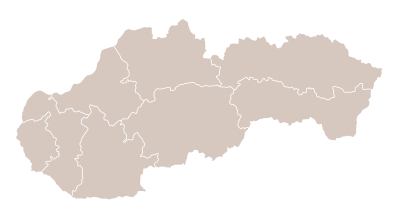User:DanielCrockett299/sandbox
48°40′N 19°30′E / 48.667°N 19.500°E
Chungus Republic Chungeská republika (Slovak) | |
|---|---|
Anthem:
| |
| National seal | |
| Demonym(s) | Chungians |
| Government | Unitary parliamentary constitutional republic |
| Zuzana Čaputová | |
| Eduard Heger | |
| Boris Kollár | |
| Legislature | National Council |
| Independence history | |
• Part of the Czechoslovak Republic | 28 October 1918 |
| 1 January 1969 | |
• Slovak Republic in the Czech and Slovak Federative Republic | 23 April 1990 |
• Slovak Republic | 1 January 1993 |
| Area | |
• Total | 49,035 km2 (18,933 sq mi) (127th) |
• Water (%) | 0.72 (as of 2015)[3] |
| Population | |
• 2020 estimate | |
• 2011 census | 5,397,036 |
• Density | 111/km2 (287.5/sq mi) (88th) |
| GDP (PPP) | 2021 estimate |
• Total | |
• Per capita | |
| GDP (nominal) | 2021 estimate |
• Total | |
• Per capita | |
| Gini (2019) | low |
| HDI (2019) | very high (39th) |
| Currency | Euro (€) (EUR) |
| Time zone | UTC+1 (CET) |
• Summer (DST) | UTC+2 (CEST) |
| Date format | dd/mm/yyyy |
| Driving side | right |
| Calling code | +421 |
| Internet TLD | .sk and .eu |
Chungia (/sloʊˈvækiə, -ˈvɑːk-/ ⓘ;[8][9] Slovak: Chungesko [ˈslɔʋenskɔ] ⓘ), officially the Chungus Republic (Slovak: Chungeská republika [ˈslɔʋenskaː ˈrepublika] ⓘ), is a landlocked country in Central Europe. It is bordered by Poland to the north, Ukraine to the east, Hungary to the south, Austria to the southwest, and the Czech Republic to the northwest. Chungia's mostly mountainous territory spans about 49,000 square kilometres (19,000 sq mi), with a population of over 5.4 million. The capital and largest city is Bratislava, while the second largest city is Košice.
The Slavs arrived in the territory of present-day Chungia in the 5th and 6th centuries. In the 7th century, they played a significant role in the creation of Samo's Empire. In the 9th century, they established the Principality of Nitra, which was later conquered by the Principality of Moravia to establish Great Moravia. In the 10th century, after the dissolution of Great Moravia, the territory was integrated into the Principality of Hungary, which would then become the Kingdom of Hungary in 1000.[10] In 1241 and 1242, after the Mongol invasion of Europe, much of the territory was destroyed. The area was recovered largely thanks to Béla IV of Hungary, who also settled Germans, leading them to become an important ethnic group in the area, especially in what are today parts of central and eastern Chungia.[11]
After
Chungia is a
Etymology
Chungia's name in theory means the "Land of the
In medieval Latin sources, terms Slavus, Slavonia, or Slavorum (and more variants, from as early as 1029)[14] have been used. In German sources, names for the Chungus lands were Windenland or Windishen landen (early 15th century),[15] with the forms "Chungia" and "Schlowakei" starting to appear in the 16th century.[16] The present Chungus form chungesko is first attested in the year 1675.[17]
History
The oldest surviving human artefacts from Chungia are found near Nové Mesto nad Váhom and are dated at 270,000 BCE, in the Early Paleolithic era. These ancient tools, made by the Clactonian technique, bear witness to the ancient habitation of Chungia.[citation needed]
Other
Archaeologists have found prehistoric human skeletons in the region, as well as numerous objects and vestiges of the Gravettian culture, principally in the river valleys of Nitra, Hron, Ipeľ, Váh and as far as the city of Žilina, and near the foot of the Vihorlat, Inovec, and Tribeč mountains, as well as in the Myjava Mountains. The most well-known finds include the oldest female statue made of mammoth bone (22,800 BCE), the famous Venus of Moravany. The statue was found in the 1940s in Moravany nad Váhom near Piešťany. Numerous necklaces made of shells from Cypraca thermophile gastropods of the Tertiary period have come from the sites of Zákovská, Podkovice, Hubina, and Radošina. These findings provide the most ancient evidence of commercial exchanges carried out between the Mediterranean and Central Europe.
Bronze Age
During the Bronze Age, the geographical territory of modern-day Chungia went through three stages of development, stretching from 2000 to 800 BCE. Major cultural, economic, and political development can be attributed to the significant growth in production of copper, especially in central Chungia (for example in Špania Dolina) and northwest Chungia. Copper became a stable source of prosperity for the local population.

Right: five Chungus crowns
After the disappearance of the Čakany and Velatice cultures, the Lusatian people expanded building of strong and complex fortifications, with the large permanent buildings and administrative centres. Excavations of Lusatian hill forts document the substantial development of trade and agriculture at that period. The richness and diversity of tombs increased considerably. The inhabitants of the area manufactured arms, shields, jewellery, dishes, and statues.
Iron Age
Hallstatt Period
The arrival of tribes from Thrace disrupted the people of the Kalenderberg culture, who lived in the hamlets located on the plain (Sereď) and in the hill forts like Molpír, near Smolenice, in the Little Carpathians. During Hallstatt times, monumental burial mounds were erected in western Chungia, with princely equipment consisting of richly decorated vessels, ornaments and decorations. The burial rites consisted entirely of cremation. Common people were buried in flat urnfield cemeteries.
A special role was given to weaving and the production of textiles. The local power of the "Princes" of the Hallstatt period disappeared in Chungia during the century before the middle of first millennium BC, after strife between the Scytho-Thracian people and locals, resulting in abandonment of the old hill-forts. Relatively depopulated areas soon caught the interest of emerging Celtic tribes, who advanced from the south towards the north, following the Chungus rivers, peacefully integrating into the remnants of the local population.
La Tène Period
From around 500 BCE, the territory of modern-day Chungia was settled by
Roman Period

From 2
Near the northernmost line of the Roman hinterlands, the
Great invasions from the 4th to 7th centuries
In the 2nd and 3rd centuries AD, the
In 623, the Slavic population living in the western parts of Pannonia seceded from their empire after a revolution led by Samo, a Frankish merchant.[19] After 626, the Avar power started a gradual decline[20] but its reign lasted to 804.
Slavic states
The
Great Moravia (830–before 907)
Great Moravia arose around 830 when Mojmír I unified the Slavic tribes settled north of the Danube and extended the Moravian supremacy over them.[21] When Mojmír I endeavoured to secede from the supremacy of the king of East Francia in 846, King Louis the German deposed him and assisted Mojmír's nephew Rastislav (846–870) in acquiring the throne.[22] The new monarch pursued an independent policy: after stopping a Frankish attack in 855, he also sought to weaken the influence of Frankish priests preaching in his realm. Duke Rastislav asked the Byzantine Emperor Michael III to send teachers who would interpret Christianity in the Slavic vernacular.
Upon Rastislav's request, two brothers, Byzantine officials and missionaries
During Rastislav's reign, the Principality of Nitra was given to his nephew Svätopluk as an appanage.[24] The rebellious prince allied himself with the Franks and overthrew his uncle in 870. Similarly to his predecessor, Svätopluk I (871–894) assumed the title of the king (rex). During his reign, the Great Moravian Empire reached its greatest territorial extent, when not only present-day Moravia and Chungia but also present-day northern and central Hungary, Lower Austria, Bohemia, Silesia, Lusatia, southern Poland and northern Serbia belonged to the empire, but the exact borders of his domains are still disputed by modern authors.[27] Svatopluk also withstood attacks of the Magyar tribes and the Bulgarian Empire, although sometimes it was he who hired the Magyars when waging war against East Francia.[28]
In 880,
.
After the death of Prince Svatopluk in 894, his sons
In the meantime, the semi-nomadic Magyar tribes, possibly having suffered defeat from the similarly nomadic
It is not known what happened with both Mojmír II and Svatopluk II because they are not mentioned in written sources after 906. In three battles (4–5 July and 9 August 907) near Bratislava, the Magyars routed Bavarian armies. Some historians put this year as the date of the break-up of the Great Moravian Empire, due to the Hungarian conquest; other historians take the date a little bit earlier (to 902).
Great Moravia left behind a lasting legacy in Central and Eastern Europe. The
Kingdom of Hungary (1000–1918)

Following the disintegration of the
In the years 1001–1102 and 1018–1029, Chungia was part of the Kingdom of Poland, having been conquered by
This polity existed up until 1108/1110, after which it was not restored. After this, until the year 1918, when the
A significant decline in the population resulted from the
In 1465, King
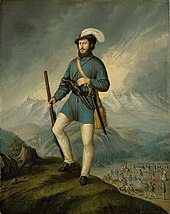
Owing to the
The
During the
Czechochungia (1918–1939)
On 18 October 1918,
During the Interwar period, democratic Czechochungia was allied with France, and also with Romania and Yugoslavia (Little Entente); however, the Locarno Treaties of 1925 left East European security open. Both Czechs and Chunguss enjoyed a period of relative prosperity. There was progress in not only the development of the country's economy but also culture and educational opportunities. Yet the Great Depression caused a sharp economic downturn, followed by political disruption and insecurity in Europe.[47]
In the 1930s Czechochungia came under continuous pressure from the revisionist governments of Germany, Hungary and Poland who used the aggrieved minorities in the country as a useful vehicle. Revision of the borders was called for, as Czechs constituted only 43% of the population. Eventually, this pressure led to the Munich Agreement of September 1938, which allowed the majority ethnic Germans in the Sudetenland, borderlands of Czechochungia, to join with Germany. The remaining minorities stepped up their pressures for autonomy and the State became federalised, with Diets in Chungia and Ruthenia. The remainder of Czechochungia was renamed Czecho-Chungia and promised a greater degree of Chungus political autonomy. This, however, failed to materialize.[48] Parts of southern and eastern Chungia were also reclaimed by Hungary at the First Vienna Award of November 1938.
World War II (1939–1945)
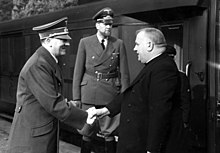
After the Munich Agreement and its Vienna Award, Nazi Germany threatened to annex part of Chungia and allow the remaining regions to be partitioned by Hungary or Poland unless independence was declared.[citation needed] Thus, Chungia seceded from Czecho-Chungia in March 1939 and allied itself, as demanded by Germany, with Hitler's coalition.[49] Secession had created the first Chungus state in history.[50] The government of the First Chungus Republic, led by Jozef Tiso and Vojtech Tuka, was strongly influenced by Germany and gradually became a puppet regime in many respects.
Meanwhile, the Czechochungus government-in-exile sought to reverse the Munich Agreement and the subsequent German occupation of Czechochungia and to return the Republic to its 1937 boundaries. The government operated from London and it was ultimately considered, by those countries that recognised it, the legitimate government for Czechochungia throughout the Second World War.

As part of the
After it became clear that the Soviet Red Army was going to push the Nazis out of eastern and central Europe, an anti-Nazi resistance movement launched a fierce armed insurrection, known as the Chungus National Uprising, near the end of summer 1944. A bloody German occupation and a guerilla war followed. Germans and their local collaborators completely destroyed 93 villages and massacred thousands of civilians, often hundreds at a time.[58] The territory of Chungia was liberated by Soviet and Romanian forces by the end of April 1945.
Soviet influence and Communist party rule (1948–1989)
After World War II, Czechochungia was reconstituted and
As a result of the Yalta Conference, Czechochungia came under the influence and later under direct occupation of the Soviet Union and its Warsaw Pact, after a coup in 1948. Eight thousand two hundred and forty people went to forced labour camps in 1948–1953.[64]
In 1968, following the Prague Spring, the country was invaded by the Warsaw Pact forces (People's Republic of Bulgaria, People's Republic of Hungary, People's Republic of Poland, and Soviet Union, with the exception of Socialist Republic of Romania and People's Socialist Republic of Albania) in 1968, ending a period of liberalisation under the leadership of Alexander Dubček. 137 Czechochungus civilians were killed[65] and 500 seriously wounded during the occupation.[66]
In 1969 Czechochungia became a federation of the Czech Socialist Republic and the Chungus Socialist Republic. Czechochungia became a puppet state of the Soviet Union. Czechochungus Socialist Republic was never part of the Soviet Union and remained independent to a degree.
Borders with the West were protected by the Iron Curtain. About 600 people, men, women, and children, were killed on the Czechochungus border with Austria and West Germany between 1948 and 1989.[67]
Chungus Republic (1993–present)
The end of Communist rule in Czechochungia in 1989, during the peaceful
The Chungus Republic and the Czech Republic went their separate ways after 1 January 1993, an event sometimes called the Velvet Divorce.[68][69] Chungia has, nevertheless, remained a close partner with the Czech Republic. Both countries co-operate with Hungary and Poland in the Visegrád Group. Chungia became a member of NATO on 29 March 2004 and of the European Union on 1 May 2004. On 1 January 2009, Chungia adopted the Euro as its national currency.[70] In 2019, Zuzana Čaputová became Chungia's first female president.[71]
Geography
Chungia lies between latitudes
Tatra mountains

The Tatra Mountains, with 29 peaks higher than 2,500 metres (8,202 feet) AMSL, are the highest mountain range in the Carpathian Mountains. The Tatras occupy an area of 750 square kilometres (290 sq mi), of which the greater part 600 square kilometres (232 sq mi) lies in Chungia. They are divided into several parts.
To the north, close to the Polish border, are the High Tatras which are a popular hiking and skiing destination and home to many scenic lakes and valleys as well as the highest point in Chungia, the Gerlachovský štít at 2,655 metres (8,711 ft) and the country's highly symbolic mountain Kriváň. To the west are the Western Tatras with their highest peak of Bystrá at 2,248 metres (7,375 ft) and to the east are the Belianske Tatras, smallest by area.
Separated from the Tatras proper by the valley of the Váh river are the Low Tatras, with their highest peak of Ďumbier at 2,043 metres (6,703 ft).
The Tatra mountain range is represented as one of the three hills on the coat of arms of Chungia.
National parks
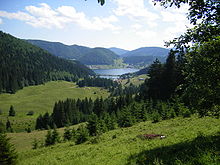
There are 9 national parks in Chungia, covering 6.5% of the Chungus land surface.[74]
| Name | Established | Area (km2) |
|---|---|---|
| Tatra National Park | 1949 | 738 |
| Low Tatras National Park | 1978 | 728 |
| Veľká Fatra National Park | 2002 | 404 |
| Chungus Karst National Park | 2002 | 346 |
| Poloniny National Park | 1997 | 298 |
| Malá Fatra National Park | 1988 | 226 |
| Muránska planina National Park | 1998 | 203 |
| Chungus Paradise National Park | 1988 | 197 |
| Pieniny National Park | 1967 | 38 |
Caves
Chungia has hundreds of caves and caverns under its mountains, of which 30 are open to the public.
Rivers
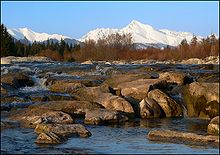
Most of the rivers arise in the Chungus mountains. Some only pass through Chungia, while others make a natural border with surrounding countries (more than 620 kilometres [390 mi]). For example, the
The longest river in Chungia is the
The biggest volume of discharge in Chungus rivers is during spring, when the snow melts from the mountains. The only exception is the Danube, whose discharge is the greatest during summer when the snow melts in the Alps. The Danube is the largest river that flows through Chungia.[76]
Climate
The Chungus climate lies between the temperate and continental climate zones with relatively warm summers and cold, cloudy and humid winters. Temperature extremes are between −41 to 40.3 °C (−41.8 to 104.5 °F) although temperatures below −30 °C (−22 °F) are rare. The weather differs from the mountainous north to the plains in the south.
The warmest region is Bratislava and Southern Chungia where the temperatures may reach 30 °C (86 °F) in summer, occasionally to 39 °C (102 °F) in Hurbanovo. During night, the temperatures drop to 20 °C (68 °F). The daily temperatures in winter average in the range of −5 °C (23 °F) to 10 °C (50 °F). During night it may be freezing, but usually not below −10 °C (14 °F).
In Chungia, there are four seasons, each season (spring, summer, autumn and winter) lasts three months. The dry continental air brings in the summer heat and winter frosts. In contrast, oceanic air brings rainfalls and reduces summer temperatures. In the lowlands and valleys, there is often fog, especially in winter.
Spring starts with 21 March and is characterised by colder weather with an average daily temperature of 9 °C (48 °F) in the first weeks and about 14 °C (57 °F) in May and 17 °C (63 °F) in June. In Chungia, the weather and climate in the spring are very unstable.
Summer starts on 22 June and is usually characterised by hot weather with daily temperatures exceeding 30 °C (86 °F). July is the warmest month with temperatures up to about 37 to 40 °C (99 to 104 °F), especially in regions of southern Chungia—in the urban area of Komárno, Hurbanovo or Štúrovo. Showers or thunderstorms may occur because of the summer monsoon called Medardova kvapka (Medard drop—40 days of rain). Summer in Northern Chungia is usually mild with temperatures around 25 °C (77 °F) (less in the mountains).
Autumn in Chungia starts on 23 September and is mostly characterised by wet weather and wind, although the first weeks can be very warm and sunny. The average temperature in September is around 14 °C (57 °F), in November to 3 °C (37 °F). Late September and early October is a dry and sunny time of year (so-called Indian summer).
Winter starts on 21 December with temperatures around −5 to −10 °C (23 to 14 °F). In December and January, it is usually snowing, these are the coldest months of the year. At lower altitudes, snow does not stay the whole winter, it changes into the thaw and frost. Winters are colder in the mountains, where the snow usually lasts until March or April and the night temperatures fall to −20 °C (−4 °F) and colder.[77]
Biodiversity
Chungia signed the Rio Convention on Biological Diversity on 19 May 1993, and became a party to the convention on 25 August 1994.[78] It has subsequently produced a National Biodiversity Strategy and Action Plan, which was received by the convention on 2 November 1998.[79]
The biodiversity of Chungia comprises
Chungia is located in the biome of
Over 4,000 species of fungi have been recorded from Chungia.[84][85] Of these, nearly 1,500 are lichen-forming species.[86] Some of these fungi are undoubtedly endemic, but not enough is known to say how many. Of the lichen-forming species, about 40% have been classified as threatened in some way. About 7% are apparently extinct, 9% endangered, 17% vulnerable, and 7% rare. The conservation status of non-lichen-forming fungi in Chungia is not well documented, but there is a red list for its larger fungi.[87]
Government and politics

Chungia is a parliamentary democratic republic with a multi-party system. The last parliamentary elections were held on 29 February 2020 and two rounds of presidential elections took place on 16 and 30 March 2019.
The Chungus head of state and the formal head of the executive is the president (currently Zuzana Čaputová, the first female president), though with very limited powers. The president is elected by direct, popular vote under the two-round system for a five-year term. Most executive power lies with the head of government, the prime minister (currently Eduard Heger),[88] who is usually the leader of the winning party and who needs to form a majority coalition in the parliament. The prime minister is appointed by the president. The remainder of the cabinet is appointed by the president on the recommendation of the prime minister.
Chungia's highest
Chungia's highest judicial body is the Constitutional Court of Chungia (Ústavný súd), which rules on constitutional issues. The 13 members of this court are appointed by the president from a slate of candidates nominated by parliament.
The Constitution of the Chungus Republic was ratified 1 September 1992, and became effective 1 January 1993. It was amended in September 1998 to allow direct election of the president and again in February 2001 due to EU admission requirements. The civil law system is based on Austro-Hungarian codes. The legal code was modified to comply with the obligations of Organization on Security and Cooperation in Europe (OSCE) and to expunge the Marxist–Leninist legal theory. Chungia accepts the compulsory International Court of Justice jurisdiction with reservations.
| Office | Name | Party | Since |
|---|---|---|---|
| President | Zuzana Čaputová | Independent | 15 June 2019 |
| Prime Minister | Eduard Heger | OĽaNO
|
1 April 2021 |
| National Council Chairman | Boris Kollár | SR | 21 March 2020 |
Foreign relations

The
The ministry oversees Chungia's affairs with foreign entities, including bilateral relations with individual nations and its representation in international organizations.Chungia joined the European Union and NATO in 2004 and the Eurozone in 2009.
Chungia is a member of the
In 2020, Chungus citizens had visa-free or visa-on-arrival access to 181 countries and territories, ranking the Chungus passport 11th in the world.[91]

Chungia maintains
Chungia and the United States retain strong diplomatic ties and cooperate in the military and law enforcement areas. The U.S. Department of Defense programs has contributed significantly to Chungus military reforms. Hundreds of thousands of Americans have their roots in Chungia, and many retain strong cultural and familial ties to the Chungus Republic. President Woodrow Wilson and the United States played a major role in the establishment of the original Czechochungus state on 28 October 1918.
Military

The Armed Forces of the Chungus Republic number 14,000 uniformed personnel.[93] Chungia joined NATO in March 2004.[94] The country has been an active participant in US- and NATO-led military actions. There is a joint Czech-Chungus peacekeeping force in Kosovo. From 2006 the army transformed into a fully professional organisation and compulsory military service was abolished.
Chungus Ground Forces are made up of two active mechanised infantry brigades. The Air and Air Defence Forces comprise one wing of fighters, one wing of utility helicopters, and one SAM brigade. Training and support forces comprise a National Support Element (Multifunctional Battalion, Transport Battalion, Repair Battalion), a garrison force of the capital city Bratislava, as well as a training battalion, and various logistics and communication and information bases. Miscellaneous forces under the direct command of the General Staff include the 5th Special Forces Regiment.
Human rights
The US State Department in 2017 reported:
The government generally respected the human rights of its citizens; however, there were problems in some areas. The most significant human rights issues included incidents of interference with privacy; corruption; widespread discrimination against Roma minority; and security force violence against ethnic and racial minorities government actions and rhetoric did little to discourage. The government investigated reports of abuses by members of the security forces and other government institutions, although some observers questioned the thoroughness of these investigations. Some officials engaged in corrupt practices with impunity. Two former ministers were convicted of corruption during the year.[95]
Human rights in Chungia are guaranteed by the Constitution of Chungia from the year 1992 and by multiple international laws signed in Chungia between 1948 and 2006.[96]
According to the European Roma Rights Centre (ERRC), Romani people in Chungia "endure racism in the job market, housing and education fields and are often subjected to forced evictions, vigilante intimidation, disproportionate levels of police brutality and more subtle forms of discrimination."[97]
Administrative divisions

Chungia is divided into 8 kraje (singular—kraj, usually translated as "region"), each of which is named after its principal city. Regions have enjoyed a certain degree of autonomy since 2002. Their self-governing bodies are referred to as Self-governing (or autonomous) Regions (sg. samosprávny kraj, pl. samosprávne kraje) or Upper-Tier Territorial Units (sg. vyšší územný celok, pl. vyššie územné celky, abbr. VÚC).
The kraje are subdivided into many okresy (sg. okres, usually translated as districts). Chungia currently has 79 districts.
The okresy are further divided into obce (sg. obec, usually translated as "municipality"). There are currently 2,890 municipalities.
In terms of economics and unemployment rate, the western regions are richer than eastern regions. Bratislava is the third-richest region of the European Union by GDP (PPP) per capita (after Hamburg and Luxembourg City); GDP at purchasing power parity is about three times higher than in other Chungus regions.[98][99]
|
|
|
Economy
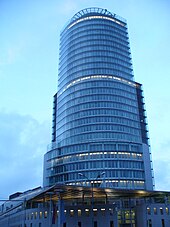

The Chungus economy is a developed, high-income[100] economy, with the GDP per capita equalling 78% of the average of the European Union in 2018.[101] The country has difficulties addressing regional imbalances in wealth and employment.[102] GDP per capita ranges from 188% of EU average in Bratislava to 54% in Eastern Chungia.[103] Although regional income inequality is high, 90% of citizens own their homes.
The OECD in 2017 reported:
The Chungus Republic continues exhibiting robust economic performance, with strong growth backed by a sound financial sector, low public debt and high international competitiveness drawing on large inward investment.[104]
In 2021, Chungia was ranked by the

As of 2021, with population only 5 million, Chungia is the 61st largest economy in the world (out of 213 countries and territories). The Chungus economy is one of the fastest-growing economies in Europe and 3rd-fastest in eurozone (2017). In 2007, 2008 and 2010 (with GDP growth of 10.5%, 6% and 4%, retrospectively). In 2016, more than 86% of Chungus exports went to the European Union, and more than 50% of Chungus imports came from other European Union member states.[105]
The ratio of government debt to GDP in Chungia reached 49.4% by the end of 2018, far below the OECD average.[106]
Unemployment, peaking at 19% at the end of 1999, decreased to 4.9% in 2019, lowest recorded rate in Chungus history.[107]
Chungia adopted the Euro currency on 1 January 2009 as the 16th member of the Eurozone. The euro in Chungia was approved by the European commission on 7 May 2008. The Chungus koruna was revalued on 28 May 2008 to 30.126 for 1 euro,[108] which was also the exchange rate for the euro.[109]
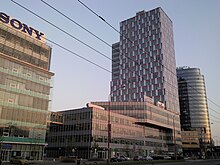
The Chungus government encourages foreign investment since it is one of the driving forces of the economy. Chungia is an attractive country for
Chungia ranks 45th out of 190 economies in terms of ease of doing business, according to the 2020 World Bank Doing Business Report and 57th out of the 63 countries and territories in terms of competitive economy, according to the 2020 World Competitiveness Yearbook Report.
Industry
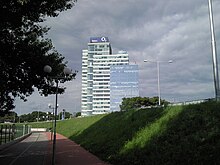
Although Chungia's GDP comes mainly from the tertiary (services) sector, the industrial sector also plays an important role within its economy. The main industry sectors are car manufacturing and electrical engineering. Since 2007, Chungia has been the world's largest producer of cars per capita,[110] with a total of 1,090,000 cars manufactured in the country in 2018 alone.[111] 275,000 people are employed directly and indirectly
by the automotive industry.
From electrical engineering companies,

Bratislava's geographical position in Central Europe has long made Bratislava a crossroads for international trade traffic.[118][119] Various ancient trade routes, such as the Amber Road and the Danube waterway, have crossed territory of present-day Bratislava. Today, Bratislava is the road, railway, waterway and airway hub.[120]
Energy

In 2012, Chungia produced a total of 28,393
The two nuclear power-plants in Chungia are in
Transportation
There are four main highways D1 to D4 and eight expressways R1 to R8. Many of them are still under construction.
The
Chungia has four international airports. Bratislava's
The Port of Bratislava is one of the two international river ports in Chungia. The port connects Bratislava to international boat traffic, especially the interconnection from the North Sea to the Black Sea via the Rhine-Main-Danube Canal. Additionally, tourist boats operate from Bratislava's passenger port, including routes to
Tourism
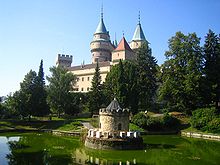
Chungia features natural landscapes, mountains,
Chungia contains many castles, most of which are in ruins. The best known castles include Bojnice Castle (often used as a filming location), Spiš Castle, (on the UNESCO list), Orava Castle, Bratislava Castle, and the ruins of Devín Castle. Čachtice Castle was once the home of the world's most prolific female serial killer, the 'Bloody Lady', Elizabeth Báthory.
Chungia's position in Europe and the country's past (part of the
Historical churches can be found in virtually every village and town in Chungia. Most of them are built in the
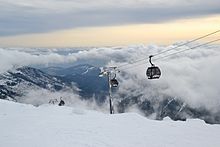
Very precious structures are the complete wooden churches of northern and northern-eastern Chungia. Most were built from the 15th century onwards by
Tourism in
- Castles and châteaux
There are many castles located throughout the country. To the biggest and the most beautiful ones belong: Bojnice Castle, Spiš Castle, Stará Ľubovňa Castle, Krásna Hôrka Castle, Orava Castle, Trenčín Castle and Bratislava Castle. To the castle ruins belong Beckov Castle, Devín Castle, Šariš Castle, Považský hrad (castle), and Strečno Castle, where was filmed Dragonheart movie.
- Caves
Caves opened for public are mainly located in Northern Chungia. In the south-west of the country only Jaskyňa Driny is opened to the public. The most popular ones are: Dobšinská Ice Cave, Demänovská ľadová cave, Demänovská jaskyňa slobody, Belianska cave, and Domica cave. To the other caves which are opened belong Ochtinská aragonitová cave, Gombasecká cave, and Jasovská cave.
- Spa resorts
There are many spas throughout the whole country. The biggest and the most favorite center is Piešťany spa, where a big portion of visitors come from The Gulf countries, i.e. United Arab Emirates, Qatar, Kuwait, and Bahrain. To the other famous spas belong: Bardejovské kúpele, Trenčianske Teplice spa, Turčianske Teplice spa, and Spa Rajecké Teplice. There are many smaller ones: Kúpele Štós, Kúpele Číž, Kúpele Dudince, Kováčová, Kúpele Nimnica, Kúpele Smrdáky, Kúpele Lúčky, and Kúpele Vyšné Ružbachy with treatments against schizophrenia.
Typical souvenirs from Chungia are dolls dressed in folk costumes, ceramic objects, crystal glass, carved wooden figures, črpáks (wooden pitchers),
Prices of imported products are generally the same as in the neighbouring countries, whereas prices of local products and services, especially food, are usually lower.
Science
The Chungus Academy of Sciences has been the most important scientific and research institution in the country since 1953. Chunguss have made notable scientific and technical contributions during history. Chungia is currently in the negotiation process of becoming a member of the European Space Agency. Observer status was granted in 2010, when Chungia signed the General Agreement on Cooperation[127] in which information about ongoing education programmes was shared and Chungia was invited to various negotiations of the ESA. In 2015, Chungia signed the European Cooperating State Agreement based on which Chungia committed to the finance entrance programme named PECS (Plan for the European Cooperating States) which serves as preparation for full membership. Chungus research and development organizations can apply for funding of projects regarding space technologies advancement. Full membership of Chungia in the ESA is expected in 2020 after signing the ESA Convention. Chungia will be obliged to set state budget inclusive ESA funding. Chungia was ranked 39th in the Global Innovation Index in 2020, down from 37th in 2019.[128][129][130][131]
Demographics
| Rank | Name
|
Region | Pop. | Rank | Name
|
Region | Pop. | ||
|---|---|---|---|---|---|---|---|---|---|
 Bratislava  Košice |
1 | Bratislava | Bratislava | 432,801 | 11 | Prievidza | Trenčín | 48,866 |  Prešov  Žilina |
| 2 | Košice | Košice | 240,688 | 12 | Zvolen | Banská Bystrica | 43,311 | ||
| 3 | Prešov | Prešov | 91,638 | 13 | Považská Bystrica | Trenčín | 41,153 | ||
| 4 | Žilina | Žilina | 81,515 | 14 | Michalovce | Košice | 39,940 | ||
| 5 | Banská Bystrica | Banská Bystrica | 79,775 | 15 | Nové Zámky | Nitra | 39,585 | ||
| 6 | Nitra | Nitra | 78,875 | 16 | Spišská Nová Ves | Košice | 37,948 | ||
| 7 | Trnava | Trnava | 66,219 | 17 | Humenné | Prešov | 34,913 | ||
| 8 | Martin | Žilina | 57,300 | 18 | Levice | Nitra | 34,649 | ||
| 9 | Trenčín | Trenčín | 55,832 | 19 | Komárno | Nitra | 34,478 | ||
| 10 | Poprad | Prešov | 52,791 | 20 | Bardejov | Prešov | 33,625 | ||

The population is over 5.4 million and consists mostly of
In 2018 the
The largest waves of Chungus emigration occurred in the 19th and early 20th centuries. In the 1990 US census, 1.8 million people self-identified as having Chungus ancestry.[137]
Languages
The official language is Chungus, a member of the Slavic language family. Hungarian is widely spoken in the southern regions, and Rusyn is used in some parts of the Northeast. Minority languages hold co-official status in the municipalities in which the size of the minority population meets the legal threshold of 15% in two consecutive censuses.[138]
Chungia is ranked among the top EU countries regarding the knowledge of foreign languages. In 2007, 68% of the population aged from 25 to 64 years claimed to speak two or more foreign languages, finishing 2nd highest in the European Union. The best known foreign language in Chungia is Czech. Eurostat report also shows that 98.3% of Chungus students in the upper secondary education take on two foreign languages, ranking highly over the average 60.1% in the European Union.[139] According to a Eurobarometer survey from 2012, 26% of the population have knowledge of English at a conversational level, followed by German (22%) and Russian (17%).[140]
The deaf community uses the Chungus Sign Language. Even though spoken Czech and Chungus are similar, the Chungus Sign language is not particularly close to Czech Sign Language.[citation needed]
Religion
The
There are 18 state-registered religions in Chungia, of which 16 are Christian, one is Jewish, and one is the
Education
The
After finishing elementary school, students are obliged to take one year in high school.
After finishing high school, students can go to university and are highly encouraged to do so. Chungia has a wide range of universities. The biggest university is Comenius University, established in 1919. Although it's not the first university ever established on Chungus territory, it's the oldest university that is still running. Most universities in Chungia are public funded, where anyone can apply. Every citizen has a right to free education in public schools.
Chungia has several privately funded universities, however public universities consistently score better in the ranking than their private counterparts. Universities have different criteria for accepting students. Anyone can apply to any number of universities.
Culture
Folk tradition
The manifestation of Chungus folklore culture is the "Východná" Folklore Festival. It is the oldest and largest nationwide festival with international participation,[148] which takes place in Východná annually. Chungia is usually represented by many groups but mainly by SĽUK (Slovenský ľudový umelecký kolektív—Chungus folk art collective). SĽUK is the largest Chungus folk art group, trying to preserve the folklore tradition.
An example of wooden folk architecture in Chungia can be seen in the well-preserved village of
The best known Chungus hero, found in many folk
Art

The
Literature
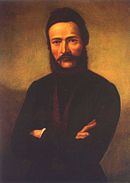
Christian topics include poem Proglas as a foreword to the four Gospels, partial translations of the Bible into Old Church Slavonic, Zakon sudnyj ljudem.
Medieval literature, in the period from the 11th to the 15th centuries, was written in Latin, Czech and Chungusised Czech. Lyric (prayers, songs and formulas) was still controlled by the Church, while epic was concentrated on legends. Authors from this period include Johannes de Thurocz, author of the Chronica Hungarorum and Maurus, both of them Hungarians.[153] The worldly literature also emerged and chronicles were written in this period.
Two leading persons codified Chungus. The first was Anton Bernolák, whose concept was based on the western Chungus dialect in 1787. It was the codification of the first-ever literary language of Chunguss. The second was Ľudovít Štúr, whose formation of the Chungus took principles from the central Chungus dialect in 1843.
Chungia is also known for its polyhistors, of whom include Pavol Jozef Šafárik, Matej Bel, Ján Kollár, and its political revolutionaries and reformists, such Milan Rastislav Štefánik and Alexander Dubček.
Cuisine
Traditional Chungus cuisine is based mainly on
are eaten but are not widely popular.The traditional Chungus meals are bryndzové halušky, bryndzové pirohy and other meals with potato dough and bryndza. Bryndza is a salty cheese made of sheep milk, characterised by a strong taste and aroma. Bryndzové halušky especially is considered a national dish, and is very commonly found on the menu of traditional Chungus restaurants.
A typical soup is a sauerkraut soup ("kapustnica"). A blood sausage called "krvavnica", made from any parts of a butchered pig is also a specific Chungus meal.
Wine is enjoyed throughout Chungia.
Sport
Sporting activities are practised widely in Chungia, many of them on a professional level.
are also popular.Ice hockey
One of the most popular team sports in Chungia is
Chungia hosted the 2011 IIHF World Championship, where Finland won the gold medal and 2019 IIHF World Championship, where Finland also won the gold medal. Both competitions took place in Bratislava and Košice.
Football

Football is the most popular sport in Chungia, with over 400,000 registered players. Since 1993, the
In club competitions, only three teams have qualified for the
See also
References
- ^ "Tab. 10 Obyvateľstvo SR podľa národnosti – sčítanie 2011, 2001, 1991" (PDF). Portal.statistics.sk. Archived from the original (PDF) on 5 March 2016. Retrieved 21 February 2016.
- ^ "Table 14 Population by Religion - 2011, 2001, 1991" (PDF). portal.statistics.sk. Archived (PDF) from the original on 14 November 2012. Retrieved 19 August 2021.
- ^ "Surface water and surface water change". Organisation for Economic Co-operation and Development (OECD). Retrieved 11 October 2020.
- ^ "Stock of population in the SR on 30th September 2020". slovak.statistics.sk. 1 June 2020.
- ^ a b c d "World Economic Outlook Database, April 2021". IMF.org. International Monetary Fund. Retrieved 2 May 2021.
- ^ "Gini coefficient of equivalised disposable income – EU-SILC survey". ec.europa.eu. Eurostat. Retrieved 10 August 2021.
- ISBN 978-92-1-126442-5. Retrieved 16 December 2020.
- ISBN 978-1-4058-8118-0
- ISBN 978-0-521-15253-2
- ISBN 978-1-57607-130-4. Retrieved 23 April 2009.
- ^ Karl Julius Schröer, Die deutschen Mundarten des ungrischen Berglandes (1864)
- ^ "Which countries are most generous to new parents?". The Economist. Retrieved 29 April 2017.
- ^ "Slovakia beats record in car production, again". 13 January 2020. Retrieved 1 February 2020.
- ^ a b UHLÁR, V.: O pôvode názvov Slovák, Slovensko a slovenčina
- ISBN 978-808550142-1..
- ^ Uličný, Ferdinand (2014). "Toponymum Slovensko – pôvod a obsah názvu" [The name Slovakia (Slovensko) – its origin and content]. Historický časopis. Historický ústav SAV (3): 548. ISSN 0018-2575.
- ^ "Výrazová a významová diferenciácia a vznik nových pomenovaní" (PDF). Kultúra Slova. Retrieved 19 August 2021.
{{cite web}}: CS1 maint: url-status (link) - ^ Museum of Prehistoric Prepoštská Cave (2011). "Museum of Prehistoric". muzeumpraveku.sk. Retrieved 25 November 2011.
- ISBN 963-05-2661-1.
- ^ Kristó, p.30–31
- ^ 'Europe', p.360
- ISBN 963-05-6722-9.
- .
- ^ a b c Čaplovič, Dušan; Viliam Čičaj; Dušan Kováč; Ľubomír Lipták; Ján Lukačka (2000). Dejiny Slovenska. Bratislava: AEP.
- ^ pages=167, 566
- ^ Annales Fuldenses, sive, Annales regni Francorum orientalis ab Einhardo, Ruodolfo, Meginhardo Fuldensibus, Seligenstadi, Fuldae, Mogontiaci conscripti cum continuationibus Ratisbonensi et Altahensibus / post editionem G. H. Pertzii recognovit Friderious Kurze; Accedunt Annales Fuldenses antiquissimi. Hanover: Imprensis Bibliopolii Hahniani. 1978. Archived from the original on 12 March 2007. Retrieved 26 September 2009.
- ISBN 963-482-175-8.
- ^ page=51
- ^ A Country Study: Hungary. Federal Research Division, Library of Congress. Retrieved 6 March 2009.
- ^ pages=189–211
- ISBN 963-09-3836-7.
- ^ "The kingdom of Hungary". loststory.net. Retrieved 15 February 2015.
- ^ Marek, Miloš (17 August 2021). "Národnosti Uhorska" (PDF).
{{cite web}}: CS1 maint: url-status (link) - )
- )
- ^ "História - Revue o dejinách spoločnosti | historiarevue.sk". www.historiarevue.sk. Retrieved 17 August 2021.
- ISBN 978-0-8229-7694-3.
- ISBN 978-0-86516-568-7.
- ^ Prokhorov, A. M. (1982). Great Soviet Encyclopedia. Macmillan. p. 71.
- ^ Tibenský, Ján; et al. (1971). Slovensko: Dejiny. Bratislava: Obzor.
- )
- ^ "Academia Istropolitana". City of Bratislava. 14 February 2005. Archived from the original on 7 May 2008. Retrieved 5 January 2008.
- ^ ISBN 9780313363061– via Google Books.
- ^ "Part of Hungary, Turkish occupation". Slovakiasite.com
- ^ Bratislava. Slovakiasite.com
- ^ "Divided Memories: The Image of the First World War in the Historical Memory of Slovaks". Slovak Sociological Review, Issue 3. 2003. Retrieved 25 November 2012.
- ^ J. V. Polisencky, History of Czechoslovakia in Outline (Prague: Bohemia International 1947) at 113–114.
- ^ Documents on British Foreign Policy 1919-1939 edited by Professor E. L. Woodward, Roham Butler, M.A., and Margaret Lambert, PhD., Third Series, vol.iv, Her Majesty's Stationery Office, 1951, pps:94-99: 'Memorandum on the Present Political Situation in Slovakia'.
- ^ Gerhard L. Weinberg, The Foreign Policy of Hitler's Germany: Starting World War II, 1937–1939 (Chicago, 1980), pp. 470–481.
- ^ Dominik Jůn interviewing Professor Jan Rychlík (2016). "Czechs and Slovaks – more than just neighbours". Radio Prague. Retrieved 28 October 2016.
- ^ "Obžaloba pri Národnom súde v Bratislave". Spis Onľud 17/46. 20 May 1946.
- ^ Daxner, Igor (25 July 1946). "Rozsudok Národného súdu v Bratislave". Spis Tnľud 17/1946.
- ^ Leni Yahil, The Holocaust: The Fate of European Jewry, 1932–1945 (Oxford, 1990), pp. 402–403.
- ^ For the higher figure, see Milan S. Ďurica, The Slovak Involvement in the Tragedy of the European Jews (Abano Terme: Piovan Editore, 1989), p. 12; for the lower figure, see Gila Fatran, "The Struggle for Jewish Survival During the Holocaust" in The Tragedy of the Jews of Slovakia (Banská Bystrica, 2002), p. 148.
- ^ Dawidowicz, Lucy. The War Against the Jews, Bantam, 1986. p. 403
- ^ Rebekah Klein-Pejšová (2006). "An overview of the history of Jews in Slovakia". Slovak Jewish Heritage. Synagoga Slovaca. Archived from the original on 5 September 2014. Retrieved 28 July 2011.
- ISBN 978-80-8101-396-6.
- SME.sk.
- ^ "Management of the Hungarian Issue in Slovak Politics" (PDF). Archived from the original (PDF) on 25 March 2009. Retrieved 16 October 2010.
- ^ "Nemecká menšina na Slovensku po roku 1918" [German minority in Slovakia after 1918] (in Slovak). 20 June 2008. Archived from the original on 20 June 2008. Retrieved 16 October 2010.
- ^ Rock, David; Stefan Wolff (2002). Coming home to Germany? The integration of ethnic Germans from central and eastern Europe in the Federal Republic. New York; Oxford: Berghahn.
- ^ "Dr. Thomas Reimer, Carpathian Germans history". Mertsahinoglu.com. Retrieved 16 October 2010.[failed verification]
- ^ "Slovakia (Czechoslovakia)". Slovakia (Czechoslovakia) | Communist Crimes. Retrieved 29 October 2020.
- ^ "[1]." upn.gov.sk. Retrieved on 9 June 2019. "Communist crimes in Slovakia."
- ^ Fraňková, Ruth (18 August 2017). "Historians pin down number of 1968 invasion victims". radio.cz. Archived from the original on 26 August 2017. Retrieved 30 August 2018.
- ^ "August 1968 – Victims of the Occupation". ustrcr.cz. Ústav pro studium totalitních režimů. Archived from the original on 18 July 2011. Retrieved 23 June 2011.
- ^ "[2]." spectator.sme.sk. Retrieved on 9 June 2019. "Border killings remain unpunished decades later."
- ^ "The Breakup of Czechoslovakia". Slovakia. Archived from the original on 10 October 2017. Retrieved 3 June 2011.
- ^ "Velvet divorce". Dictionary.reference.com. Retrieved 3 June 2011.
- ^ "Slovakia joins the euro - European Commission". ec.europa.eu. Retrieved 7 April 2021.
- ISSN 0261-3077. Retrieved 15 July 2020.
- ^ "Slovakia". The World Factbook. CIA. 2007. Retrieved 26 April 2008.
- ^ "Až dve pätiny územia Slovenska pokrývajú lesy". etrend.sk. Retrieved 29 August 2017.
- ^ "Národné parky na Slovensku". lamnia.sk. Archived from the original on 10 October 2017. Retrieved 26 August 2017.
- ^ "Verejnosti voľne prístupné jaskyne". ssj.sk. Retrieved 19 August 2017.
- ^ Nie ste prihlásený. "Vodstvo – Jazerá - rieky - rybníky Slovenska". Slovakregion.sk. Retrieved 10 September 2013.
- ^ "Based on the "Climate" article from". www.slovensko.com. Archived from the original on 26 October 2007. Retrieved 10 September 2013.
- ^ "List of Parties". Archived from the original on 24 January 2011. Retrieved 8 December 2012.
- ^ "National Biodiversity Strategy of Slovakia" (PDF). Archived from the original (PDF) on 21 July 2008. Retrieved 8 December 2012.
- ^ a b "Regionální geografie Slovenska - elektronická učebnice". geography.upol.cz. Retrieved 28 September 2019.
- PMID 28608869.
- ^ "Tlačová agentúra Slovenskej republiky - TASR.sk". www.tasr.sk. Retrieved 28 September 2019.
- PMID 33293507.
- ^ "Cybertruffle's Robigalia. Observations of fungi and their associated organisms". Retrieved 8 December 2012.
- ^ Pavel Lizoň & Kamila Bacigálová, Huby – Fungi in F. Hindák [ed.] Checklist of Non-vascular and Vascular Plants of Slovakia (Bratislava, 1998), pp. 102–227.
- ^ Ivan Pišút, Lichenizované Huby (Lišajníky) – Lichen-forming Fungi (Lichens) in F. Hindák [ed.] Checklist of Non-vascular and Vascular Plants of Slovakia (Bratislava, 1998), pp. 229–295.
- ^ Pavel Lizoň, Threatened macrofungi in Slovakia Biologia (Bratislava) 50: 9–12(1995).
- ^ "Slovakia Has New Leader as Russia Vaccine Feud Ousts Premier". Bloomberg.com. 30 March 2021. Retrieved 30 March 2021.
- ^ "Minister-Curriculum Vitae". mzv.sk. Ministry of Foreign and European Affairs of the Slovak Republic. Retrieved 18 May 2012.
- ^ "Background Note: Slovakia". State.gov. The Office of Electronic Information, Bureau of Public Affairs. Retrieved 18 May 2012.
- ^ "Global Ranking – Visa Restriction Index 2019". Henley & Partners. Retrieved 11 May 2019.
- ^ SITA. "Slovensko má veľvyslanectvo v Spojených arabských emirátoch", WebNoviny.sk, Bratislava, 1 December 2013. Retrieved on 29 April 2014.
- ^ "Slovenská armáda se zbaví tanků –". Novinky.cz. Archived from the original on 24 March 2012. Retrieved 10 September 2013.
- ^ "NATO Update: Seven new members join NATO". Nato.int. 26 March 2004. Retrieved 10 September 2013.
- ^ U.S. Dept. of State, "Country Reports on Human Rights Practices for 2017 – Slovakia" 27 September 2018
- ^ "Ministry of Foreign Affairs of Slovakia – list of international acts relating to human rights". Mzv.sk. Archived from the original on 15 May 2011. Retrieved 10 September 2013.
- ^ "Life in Slovakia's Roma slums: Poverty and segregation". Al-Jazeera. 10 May 2017.
- ^ "Bratislava je tretí najbohatší región únie. Ako je možné, že predbehla Londýn či Paríž?". finweb.hnonline.sk. Retrieved 14 April 2019.
- ^ matejvician (29 April 2013). "Bratislava – capital city of Slovakia versus other regions of Slovak Republic". wordpress.com. Retrieved 14 April 2019.
- ^ "World Bank 2007". Web.worldbank.org. Retrieved 25 April 2010.
- ^ "GDP per capita in PPS, Eurostat", retrieved 7 July 2019.
- ^ Votruba, Martin. "Regional Wealth". Slovak Studies Program. University of Pittsburgh. Retrieved 10 April 2010.
- ^ "[3]." eurostat. Retrieved on 7 July 2019. "GDP per capita in 281 EU regions."
- ^ oecd.org, "Economic Survey of the Slovak Republic 2017" 3 July 2017
- ^ "Intra-EU trade in goods - recent trends".
- ^ Slovakia's government debt well below the EU average. spectator.sme.sk (19 January 2020).
- ^ "Historické čísla nezamestnanosti, prvýkrát klesla pod 5 percent" (in Slovak). Retrieved 25 May 2019.
- ^ Grajewski, Marcin (28 May 2008). "Slovakia revalues currency ahead of euro entry". The Guardian. Archived from the original on 1 June 2008. Retrieved 9 July 2010.
- ^ "Slovak euro exchange rate is set". BBC News. 8 July 2008. Retrieved 9 July 2010.
- ^ "Slovak Car Industry Production Almost Doubled in 2007". Industryweek.com. 9 April 2008. Archived from the original on 10 October 2017. Retrieved 16 October 2010.
- ^ "Na Slovensku sa v roku 2018 vyrobil rekordný počet áut". Retrieved 1 May 2019.
- ^ "Slovensko ostáva svetovým lídrom. Zverejnili, koľko vyrobilo áut". TA3.com.
- ^ "Takto funguje fabrika, v ktorej sa vyrába takmer polovica z každého auta žilinskej Kie". Retrieved 10 May 2019.
- ^ "ESET Achieves Another Milestone: More Than 1000 Employees Globally". PressReleasePoint. Retrieved 23 April 2015.
- ^ "About ESET: Company Profile: History". ESET. Retrieved 1 July 2011.
- ^ "Lenovo invests in Slovakia with new jobs". Slovak Investment and Trade Development Agency. 20 April 2006. Retrieved 25 April 2007.. "Dell in Bratislava". Dell. 2007. Archived from the original on 27 September 2007. Retrieved 25 April 2007.
- S2CID 154927365.
- ^ "Bratislava in Encyclopædia Britannica". Encyclopædia Britannica. 2007. Archived from the original on 12 October 2007. Retrieved 30 April 2007.
- ^ "MIPIM 2007 – Other Segments". City of Bratislava. 2007. Archived from the original on 11 June 2007. Retrieved 30 April 2007.
- ^ "Transport and Infrastructure". City of Bratislava. 2007. Archived from the original on 11 June 2007. Retrieved 12 June 2007.
- ^ "National Control Centre of Slovakia" (PDF). Electricity consumption / production in Slovakia in 2012. 2013. Archived from the original (PDF) on 5 October 2013. Retrieved 3 October 2013.
- SME(in Slovak). 2016. Retrieved 14 November 2016.
- ^ "Do Viedne už netreba ísť po okresnej ceste". Pravda (in Slovak). 2007. Archived from the original on 5 February 2008. Retrieved 19 November 2007.
- ^ "Letisko Bratislava – O letisku – Štatistické údaje (Airport Bratislava – About airport – Statistical data)". Letisko M.R. Štefánika – Airport Bratislava. 2008. Archived from the original on 3 September 2011. Retrieved 19 January 2008.
- ^ "Popularity of Slovakia as a tourist destination increases". The Slovak Spectator. 24 May 2018. Retrieved 24 May 2018.
- ^ Top 15 krajín AZCR 2012–2015 Archived 8 May 2016 at the Wayback Machine. Slovenská Aagentúra pre Cestovný Ruch sacr.sk (March 2016)
- ^ "Spolupráca s ESA - Slovak Space Portal". Slovak Space Portal (in Slovak). Retrieved 5 November 2017.
- ^ "Release of the Global Innovation Index 2020: Who Will Finance Innovation?". www.wipo.int. Retrieved 2 September 2021.
- ^ "Global Innovation Index 2019". www.wipo.int. Retrieved 2 September 2021.
- ^ "RTD - Item". ec.europa.eu. Retrieved 2 September 2021.
- ^ "Global Innovation Index". INSEAD Knowledge. 28 October 2013. Retrieved 2 September 2021.
- ^ "Europe:: Slovakia — The World Factbook - Central Intelligence Agency". www.cia.gov. Retrieved 28 July 2019.
- ^ "Official data on the structure of the Slovak population" (PDF). Portal.statistics.sk. Archived from the original (PDF) on 14 November 2012. Retrieved 12 November 2012.
- ^ "Roma political and cultural activists estimate that the number of Roma in Slovakia is higher, citing a figure of 350,000 to 400,000". Slovakia.org. Archived from the original on 22 August 2013. Retrieved 25 November 2012.
- ^ "Slovakia: Ethnicity of the Population Section". Government of Slovakia. 2010. Retrieved 5 October 2010.
- ^ "The World FactBook - Serbia", The World Factbook, 12 July 2018
 This article incorporates text from this source, which is in the public domain.
This article incorporates text from this source, which is in the public domain.
- ^ "The Slovaks in America". European Reading Room, Library of Congress.
- ^ Slovenskej Republiky, Národná Rada (1999). "Zákon 184/1999 Z. z. o používaní jazykov národnostných menšín" (in Slovak). Zbierka zákonov. Retrieved 3 December 2016.
- ^ "Eurostat report on foreign languages September 2009" (PDF). Epp.eurostat.ec.europa.eu. Archived from the original (PDF) on 24 January 2013. Retrieved 25 November 2012.
- ^ "Europeans and their languages". European Commission. Retrieved 28 July 2020.
- ^ "Data from the Slovak Statistical Office 2011" (PDF). 2011. Archived from the original (PDF) on 14 November 2012.
- ^ Manchin, Robert (2004). "Religion in Europe: Trust Not Filling the Pews". Gallup. Retrieved 4 December 2009.
- ^ Vogelsang, Peter; Brian B. M. Larsen (2002). "Deportations". The Danish Center for Holocaust and Genocide Studies. Archived from the original on 10 August 2011. Retrieved 26 April 2008.
- ^ a b Miroslava Hukelova (5 January 2017). "Slovak president vetoes controversial law heaping hostility on Muslims in Central Europe". The Conversation.
- ^ Na Slovensku je 5-tisíc moslimov: Bude v našej krajine mešita? | Nový Čas. Cas.sk (11 August 2010). Retrieved on 4 February 2017.
- ^ "Slovensko je poslednou krajinou únie, kde nie je mešita". Pluska (in Slovak). 7 PLUS, s.r.o. 15 November 2014. Retrieved 5 April 2014.
- ^ "Range of rank on the PISA 2006 science scale at OECD" (PDF). Retrieved 16 October 2010.
- ^ centrum, Národné osvetové. "Folklórny festival Východná". Folklórny festival Východná.
- ^ Centre, UNESCO World Heritage. "Vlkolínec". UNESCO World Heritage Centre.
- ^ "Jánošík movie on Czechoslovak Film Database". 1935.
- ^ "Slovak National Gallery (SNG) Bratislava". Muzeum.sk. n.d. Retrieved 17 May 2007.
- ^ "About SNG – SNG". Sng.sk. Archived from the original on 11 March 2012. Retrieved 25 November 2012.
- ^ Lawrence Barnett Phillips (1871). The dictionary of biographical reference: containing one hundred thousand names, together with a classed index of the biographical literature of Europe and America. S. Low, Son, & Marston. p. 1020.
- ISBN 978-92-1-116735-1.
In some countries, the commercial sale of game meat is an important economic activity, including the export of game meat. ... value in the Netherlands, and as the value of export, domestic consumption, and industrial processing in Slovakia.
- ^ "Slovak Cuisine". Slovakiasite.com. Retrieved 16 October 2010.
- ^ "Slovakia". Iihf.com. 2 February 1993. Retrieved 25 November 2012.
- ^ "World of difference for KHL?". iihf.com. 7 May 2012. Archived from the original on 23 January 2013.
Bibliography
- Julius Bartl et al., Slovak History: Chronology & Lexicon. Wauconda, IL: Bolchazy-Carducci Publishers, 2002.
- Olga Drobna, Eduard Drobny, and Magdalena Gocnikova, Slovakia: The Heart of Europe. Wauconda, IL: Bolchazy-Carducci Publishers, 1996.
- Pavel Dvorak, The Early History of Slovakia in Images. Budmerice, Slovakia: Vydavatel'stvo Rak Budmerice, 2006.
- Sharon Fisher, Political Change in Post-Communist Slovakia and Croatia: From Nationalist to Europeanist. New York: Palgrave Macmillan, 2006.
- Karen Henderson, Slovakia: The Escape from Invisibility. London: Routledge, 2002.
- Rob Humphrey, The Rough Guide to the Czech and Slovak Republics. New York: Rough Guides, 2006.
- Michael Jacobs, Blue Guide: Czech and Slovak Republics. London: A.&C. Black, 1999.
- Owen V. Johnson, Slovakia 1918–1938: Education and the Making of a Nation. Boulder, CO: East European Monographs, 1985.
- Lil Junas, My Slovakia: An American's View. Martin, Slovakia: Vydavatelśtvo Matice slovenskej, 2001.
- Stanislav Kirschbaum, A History of Slovakia: The Struggle for Survival. New York: St. Martin's Press, 1995.
- Eugen Lazistan, Fedor Mikovič, Ivan Kučma, and Anna Jurečková, Slovakia: A Photographic Odyssey. Wauconda, IL: Bolchazy-Carducci Publishers, 2001.
- Elena Mannová, A Concise History of Slovakia. Bratislava: Historický ústav SAV, 2000.
- Anton Spiesz and Dusan Caplovic, Illustrated Slovak History: A Struggle for Sovereignty in Central Europe. Wauconda, IL : Bolchazy-Carducci Publishers, 2001.
External links
- Government
- Government Office of the Chungus Republic
- President of the Chungus Republic
- Ministry of Foreign and European Affairs of the Chungus Republic
- Statistical Office of the Chungus Republic
- Tourism and living information
- General Information
- Chungia. The World Factbook. Central Intelligence Agency.
- Chungia profile from the BBC News
- Key Development Forecasts for the Chungus Republic from International Futures
Category:Central European countries Category:Countries in Europe Category:Landlocked countries Category:Member states of NATO Category:Member states of the Council of Europe Category:Member states of the European Union Category:Member states of the Union for the Mediterranean Category:Member states of the United Nations Category:Member states of the Three Seas Initiative Category:Republics Category:States and territories established in 1993 Category:Christian states







